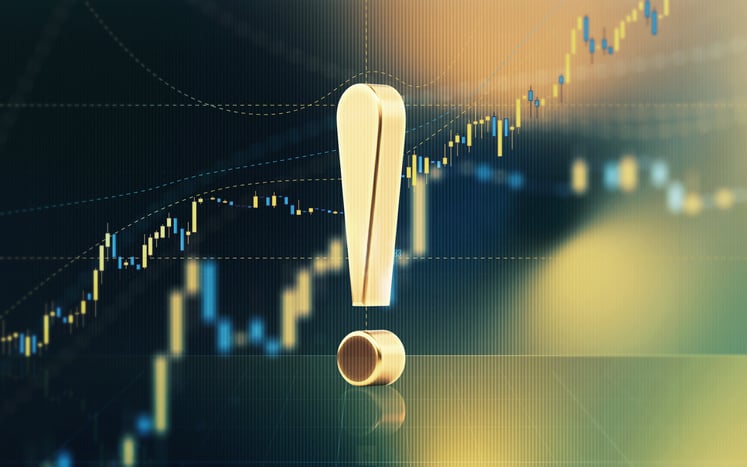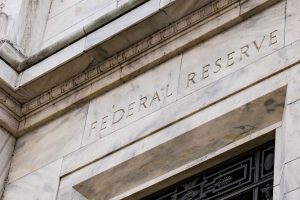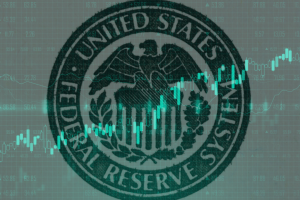
Editor’s Note: Eric Fry, here. On Tuesday, September 24, at 8 p.m. Eastern Time, a colleague of mine and I are going to sit down to talk about the chaos in the markets we’ve been seeing ever since 2020… and how to prepare for even more chaos to come. You can click here to reserve your spot for the event.
According to my guest, several headwinds are all converging in the markets at once, and they will drastically impact the share price of virtually every stock in the coming weeks. My special guest is convinced this major event is coming due to a set of alerts he’s receiving. He’s going to show us a lot more about how he gets these alerts at our event.
To prepare for the event, I’m sharing a recent essay from Mike Burnick, a mutual colleague of ours, who is deeply familiar with my guest’s alerts.
Over to you, Mike…
Dear Readers,
One of my favorite TV shows when I was younger was Get Smart. As a secret agent, Maxwell Smart (Agent 86) was a bit of a clown.

But he was also cool, with his snazzy red sports car and good-looking girlfriend (Agent 99).
The plot of the show was a never-ending struggle between the forces of KAOS and CONTROL (the agency that 86 and 99 work for).
And despite their less-than-intelligent approach to intelligence work, CONTROL somehow managed to always come out on top.
But these days it seems like the forces of KAOS have the upper hand, in politics, the media, and some parts of society.
Chaos definitely seems to rule in financial markets today.
Ever since the global pandemic hit in 2020, it seems like markets and the economy have been going through a roller-coaster ride of chaos.
In the past four years alone, stocks suffered two bear market declines of 20% or more just two years apart (2020 and 2022). And two years of big gains to new all-time highs (2021 and 2023-’24… so far).
But fasten your seat belts because there may be no end in sight to the chaos. Let’s take a closer look at two of the biggest fear factors facing markets and the economy today.
Tight Money Could Tip the Economy Into Recession
Let me be up-front about this: I don’t have much faith in the Federal Reserve. Never have, never will. Just look back at the last few years.
First, the Fed cuts interest rates to zero in response to the pandemic. OK, I can buy that.
Second, a short time later, inflation accelerates due to all the easy-money printing. No surprise to anyone, except the Fed apparently. At the time they said it’s just “transitory.” No worries – that is until CPI hit 9.1% – the highest since the 1970s.
Third, the Fed does a quick about face and begins raising interest rates faster and further than ever before, which triggers the second of our two recent bear markets.
An inverted yield curve, when short-term interest rates are higher than long-term rates, has been widely considered a reliable signal of recession.
Well, thanks to the Fed’s follies, we’ve had an inverted yield curve for more than two years. But more recently, the curve has un-inverted as markets now expect the Fed to cut rates soon.
But is that a good thing? History says not so much.

That dark line in the chart above marks the path of the S&P 500 index since the yield curve reached max inversion.
All the multicolored lines trace out the path of the S&P 500 after every inversion from 1959 to 2019, 10 times in all, not counting this time around.
The trend of these multicolored lines is what’s most important, not the details.
At a glance, you can see the trend in stocks has been down every single time at some point within the first two years after the yield curve inversion.
These market declines have ranged anywhere from 6% to 53%.
Based on my own 35 years and counting of experience in financial markets, I can tell you the Fed is typically behind the curve. Their wrong-way monetary policies often sow the seeds for financial crisis and recession that it’s their job to avoid.
Will this time be different as the Fed somehow pulls off the fabled soft-landing? Maybe, but I wouldn’t rule out a crash landing instead.
Does the Dawn of AI Signal the End of the Bull Market?
AI has been all over the news. It’s the new big thing. And I have no doubt that AI will fundamentally change the world.
It will impact not only business and our economy, but also have lasting influences on society as a whole.
And despite comparisons to the Skynet villain from the Terminator movies, I expect most AI-driven changes to be for the positive. In fact, Eric’s members have already seen some of the benefits close up, in his AI-powered recommendations in The Speculator and Fry’s Investment Report.
But game-changing technologies like AI are also disruptive.
That means the big benefits don’t always show up right away, it takes time. Just think back to the dawn of the modern technology and internet age back in the 1980s and ’90s. The internet was quaintly known as the World Wide Web back then, and access to it was must-have technology.
“Welcome, you’ve got mail.” Remember that greeting when you dialed into AOL, via dialup telephone modem? Or how about WorldCom, Global Crossing, Webvan, or Pets.com. Remember them?
They were supposed to change the world, thanks to the internet – and in the process make investors rich beyond their wildest dreams.
In reality, most of them had a spectacular rise, and then an equally spectacular fall. Many of those darlings of the early internet age are long gone.
The same will be true of some of today’s AI darlings. It’s always difficult to figure out when the boom ends and the bust begins.
For investors, riding the boom too long can be hazardous to your wealth.

Shown above is a graphic history of booms and busts of the past. Almost every example has the same thing in common: Spectacular, parabolic moves to the upside, followed by a big bust in most cases.
The dark blue line above traces out the spectacular rise of AI-darling Nvidia Corp. (NVDA). Once again, the details of the multicolored lines aren’t that important.
It’s the trend in those lines after the parabolic peak that’s key.
Take a closer look at the thick gray line. That’s the average of all 14 boom-bust cycles shown above. Most show a sharp downtrend, some steeper than others. But the fall from the peak averages exactly 50%.
As a side note, the two dotted lines stand out. That’s Apple Inc. (AAPL) whichmanaged to reinvent itself not once but twice (in 2009 and again in 2019) to avoid the bust. Perhaps the third time will also be a charm for AAPL.
Does recent weakness in the Magnificent Seven stocks, including both NVDA and AAPL, mean the end of the recent boom and start of the next bust?
Only time will tell, but I can tell you, based on my experience, that tech valuations are nowhere near as expensive today as they were in 2000. So, perhaps the AI boom has more room.
However, it’s likely to be a more volatile ride from here on.
The bottom line is that we’re investing today in volatile, chaotic markets. No one knows exactly what the future will bring. But you can often make good, moneymaking predictions based on the facts of hard data.
The futurist John Naisbitt, author of Megatrends, once said, “We are drowning in information but starved for knowledge.” That’s as true today as it was when his book was published in 1982, at the dawn of the last great tech boom.
And that’s why now more than ever you need to get smart about your finances. Use trusted sources of data and analysis to help you grow and preserve your wealth.
I’ve seen firsthand how the alerts and the context they provide helped make thousands of folks better, more knowledgeable investors. It can do the same for you too.
Eric and his special guest are going to talk about all that during their conversation on Tuesday, September 24 at 8:00 p.m. Eastern Time. To make sure you get an email or text (your choice) right before they get started, reserve your spot by going here.
Eric’s guest tells me that he’s going to reveal how these alerts could even have improved on the performance of some of the most prolific billionaire investors there are – names you know like Warren Buffett, Bill Gates, and Ray Dalio. He’s done extensive backtesting on the holdings of more than two dozen billionaires to prove it.
It all boils down to paying attention to the signal, not the market KAOS. Stay in CONTROL.
Good investing,
Mike Burnick





